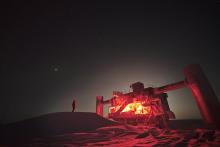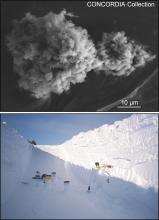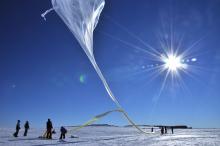Listen to today's episode of StarDate on the web the same day it airs in high-quality streaming audio without any extra ads or announcements. Choose a $8 one-month pass, or listen every day for a year for just $30.
You are here
Big Balloons
It’s balloon season in Antarctica. NASA’s getting ready to launch three giant balloons from McMurdo Station, on the Antarctic coast. At least it will try to launch them. Last year, high winds kept its balloons grounded. So some of this year’s launches are re-dos.
Antarctica provides a few advantages for scientific balloons, which carry telescopes and other instruments. At this time of year it offers around-the-clock daylight, so the balloon stays at a constant altitude — it doesn’t bob up and down as the Sun rises and sets. And air currents loop around the south pole, so a balloon circles the continent. That allows it to stay aloft for weeks without drifting far from its launch spot.
One of this year’s missions is called SuperTiger. It’s designed to look for the heaviest cosmic rays. These are the nuclei of heavy atoms — elements like iron and cobalt. They form in massive stars, or in collisions between neutron stars. They’re then boosted to near lightspeed. Studying these particles from altitudes of 25 miles or so will help scientists figure out where they came from and how they were given such a powerful “kick.”
Another mission is BLAST. It was scheduled to fly last year, but was grounded by the weather. It’ll measure grains of dust between the stars. The grains are caught in magnetic fields, which can influence the formation of new stars. Tracing the dust grains reveals the magnetic fields, helping astronomers learn more about how stars are born.
Script by Damond Benningfield






